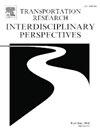Human&vehicle-in-the-loop test method in human factors research on automated vehicles: Conceptualization, realization, case-study, and lessons learned
IF 3.9
Q2 TRANSPORTATION
Transportation Research Interdisciplinary Perspectives
Pub Date : 2025-01-01
DOI:10.1016/j.trip.2024.101282
引用次数: 0
Abstract
For the successful market launch of automated vehicles (AVs), passengers must feel safe and sufficiently comfortable during automated rides. Considering these needs is essential when developing AVs. To investigate these needs during vehicle development, studies with participants can be conducted using test vehicles and driving simulators. The human&vehicle-in-the-loop (Hu&ViL) test method, initially introduced as “vehicle-in-the-loop” (ViL) for testing driver assistance systems, combines the advantages of test vehicles and driving simulators. However, this test method is hardly known and rarely used. New research revealed that the scope of the Hu&ViL test method can be extended to research questions related to automated driving. We describe the basic concept of this extended method and its implementation in a test vehicle. We investigate the interactions between an AV and vulnerable road users in urban mixed traffic from the passenger’s perspective in a case study consisting of five studies: one online video study, two driving simulator studies, and two Hu&ViL studies. We present selected results, compare them across the studies, and derive lessons learned from implementing and conducting the studies. While the patterns of results obtained in the video study and driving simulator study were replicated in the Hu&ViL study in the first scenario involving longitudinal vehicle acceleration, the vehicle dynamics of the real vehicle changed the pattern of results in the second scenario involving lateral vehicle acceleration. The Hu&ViL test method is suitable for investigating a variety of research questions from the perspective of human drivers and passengers of AVs.
求助全文
约1分钟内获得全文
求助全文
来源期刊

Transportation Research Interdisciplinary Perspectives
Engineering-Automotive Engineering
CiteScore
12.90
自引率
0.00%
发文量
185
审稿时长
22 weeks
 求助内容:
求助内容: 应助结果提醒方式:
应助结果提醒方式:


